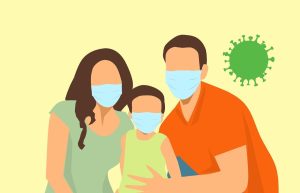 By Brandon Martin
By Brandon Martin
The Virginia Department of Health (VDH) is currently collecting applications to fill approximately 1,300 job openings across the state as a contact tracer in an effort to identify the origins of coronavirus (COVID-19) cases.
The contact tracers will be responsible for identifying and contacting individuals who may have come in contact with those recently diagnosed with COVID-19.
During a teleconference on May 21, VDH Division of Immunization Epidemiologist Marshall Vogt said that contact tracing isn’t something new to the health department, and that it is used routinely when collecting data for other infectious diseases.
Ideally, the department is looking to fill the positions with “highly-trained, empathetic workers who understand maintaining patient confidentiality,” he said. In addition, contact tracers will be responsible for referring patients to the proper resources if they test positive for COVID-19, and doing routine check-ins with those affected.
“This is so important because it can prevent spread in a chain of contacts,” Vogt added.
VDH Deputy Commissioner of Administration Mona Bector said that the department has received “6,000 resumes” from a variety of job searching platforms. The department plans to begin phone screenings in the coming weeks.
As of May 21, a job was posted for contact tracers in Martinsville through Astyra Corporation. A salary was not included, but the job is listed as full-time with no benefits. Some job posts for the same work in other parts of Virginia include an hourly salary.
Applicants are requested to have a knowledge of medical terminology and procedures, but Vogt said a public health background is really only needed for a case investigator position, which is another job opening. Contact tracers, on the other hand, are only asked to have the ability to communicate, empathize and build trust.
Bector said it is an added bonus if the applicant is bilingual, since the department is committed to delivering accurate information to all Virginians.
She added that tracers will work either at home or in a call center primarily, with the potential of knocking on doors in the local neighborhood, which is why hiring local talent is important.
Vogt said ongoing discussion with local health departments are ongoing to determine the best place to deploy the new contact tracers, but “any place where cases are, there will be contact tracers.”
Before the pandemic, Bector said that VDH had 129 people working as contact tracers/case investigators. To help with a backlog, the department reassigned an approximate 350 workers from other staff members, such as disease intervention specialists. Once the new contact tracers are properly trained, Bector said the transferred staff members will return to their normal jobs.
The contact tracers only make up half of the equation for VDH, according to Bector, who said that when the new contact tracers are hired, there will be extra technology to assist them.
First, Bector said that the department will be rolling out a “buoy tool” for people to do a symptom check on themselves. The tool called “COVID-19 Check”will recommend self-isolation or seeing a doctor, based on the symptoms. This will accompany a revamped data management system called “COVID Check” and a ‘to-be-developed app’ which will alert users when they have come in close contact with COVID-positive individuals.
The proximity app is expected within three weeks, according to Bector. She said the department is looking at using Google and Apple application programming interfaces (API). APIs define the kinds of calls or requests that can be made, how to make them, the data formats that should be used, the conventions to follow, etc.
Bector said this API was chosen over GPS-based functioning because it “provides for better coverage since most people have these types of phones.”
She added that VDH is looking for a cloud-based app that users can opt-in/out of to ease public concerns about governmental data collection.
To help, Bector said the companies involved are issuing public service announcements to ensure “data is only being used for COVID-19 tracking.” Until the department has actually selected a developer, it will continue to assess who has access to the data.
“We plan to be very transparent because we are trying to help people and not cause fear of new technology,” Bector said.




